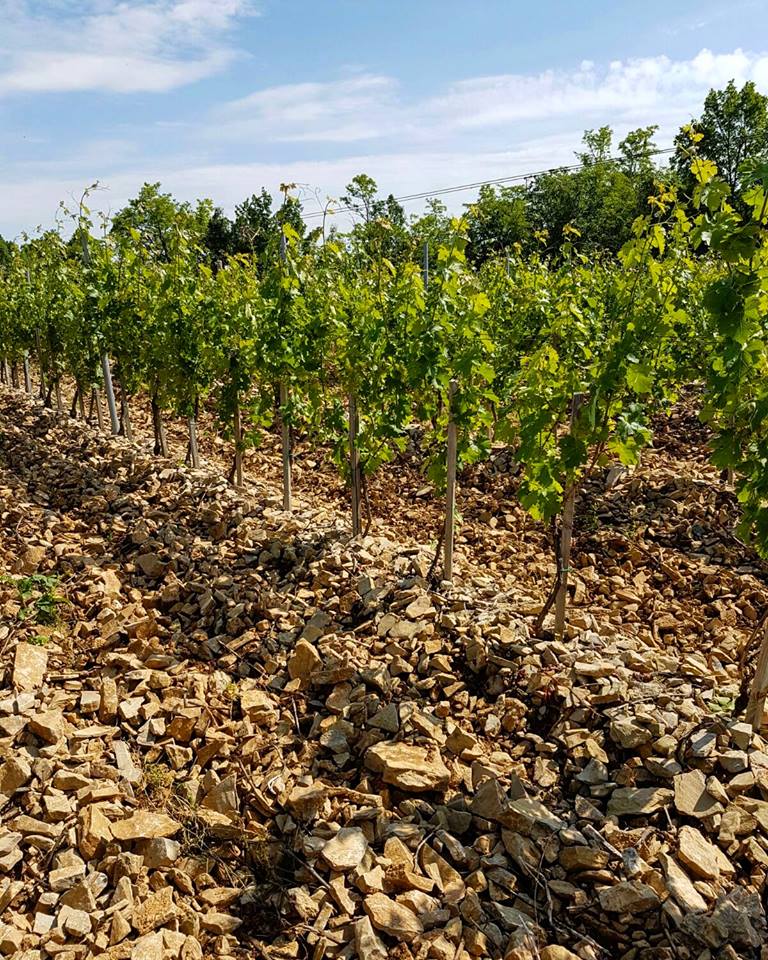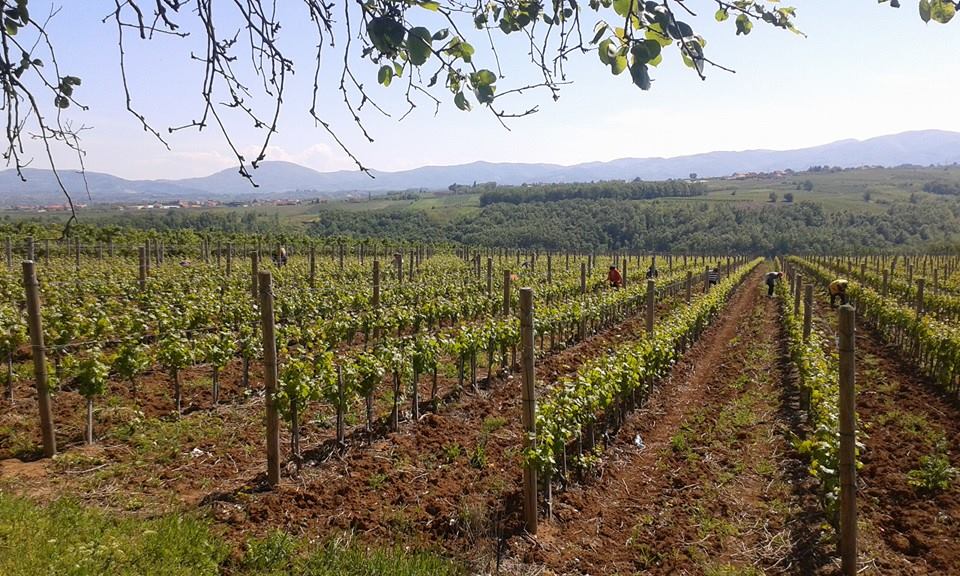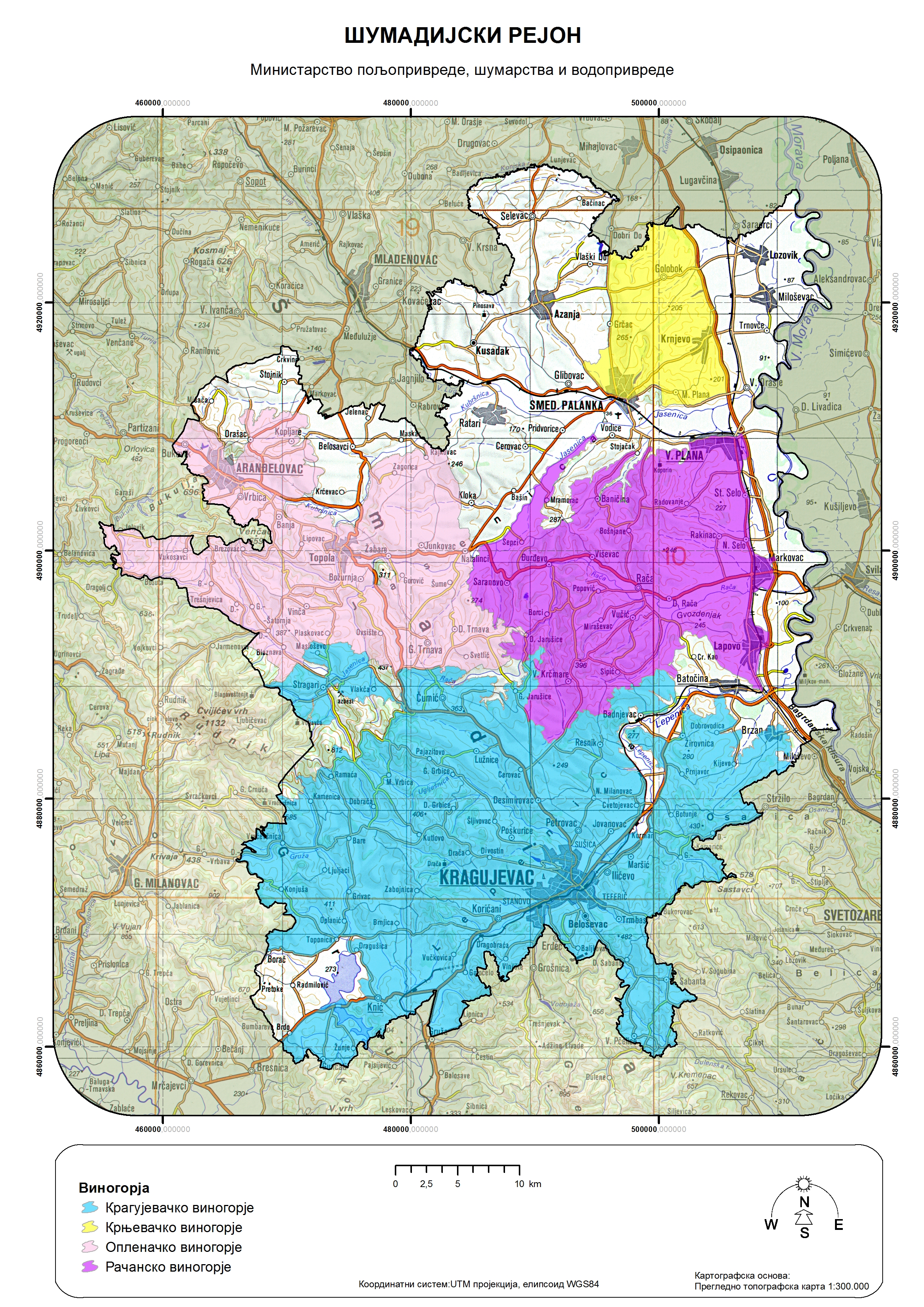Severity: 8192
Message: Creation of dynamic property CI_URI::$config is deprecated
Filename: core/URI.php
Line Number: 101
Backtrace:
File: /home/vinoped/domains/vinopedia.rs/public_html/index.php
Line: 315
Function: require_once
Severity: 8192
Message: Creation of dynamic property CI_Router::$uri is deprecated
Filename: core/Router.php
Line Number: 127
Backtrace:
File: /home/vinoped/domains/vinopedia.rs/public_html/index.php
Line: 315
Function: require_once
Severity: 8192
Message: Creation of dynamic property Post::$benchmark is deprecated
Filename: core/Controller.php
Line Number: 75
Backtrace:
File: /home/vinoped/domains/vinopedia.rs/public_html/application/controllers/Post.php
Line: 7
Function: __construct
File: /home/vinoped/domains/vinopedia.rs/public_html/index.php
Line: 315
Function: require_once
Severity: 8192
Message: Creation of dynamic property Post::$hooks is deprecated
Filename: core/Controller.php
Line Number: 75
Backtrace:
File: /home/vinoped/domains/vinopedia.rs/public_html/application/controllers/Post.php
Line: 7
Function: __construct
File: /home/vinoped/domains/vinopedia.rs/public_html/index.php
Line: 315
Function: require_once
Severity: 8192
Message: Creation of dynamic property Post::$config is deprecated
Filename: core/Controller.php
Line Number: 75
Backtrace:
File: /home/vinoped/domains/vinopedia.rs/public_html/application/controllers/Post.php
Line: 7
Function: __construct
File: /home/vinoped/domains/vinopedia.rs/public_html/index.php
Line: 315
Function: require_once
Severity: 8192
Message: Creation of dynamic property Post::$log is deprecated
Filename: core/Controller.php
Line Number: 75
Backtrace:
File: /home/vinoped/domains/vinopedia.rs/public_html/application/controllers/Post.php
Line: 7
Function: __construct
File: /home/vinoped/domains/vinopedia.rs/public_html/index.php
Line: 315
Function: require_once
Severity: 8192
Message: Creation of dynamic property Post::$utf8 is deprecated
Filename: core/Controller.php
Line Number: 75
Backtrace:
File: /home/vinoped/domains/vinopedia.rs/public_html/application/controllers/Post.php
Line: 7
Function: __construct
File: /home/vinoped/domains/vinopedia.rs/public_html/index.php
Line: 315
Function: require_once
Severity: 8192
Message: Creation of dynamic property Post::$uri is deprecated
Filename: core/Controller.php
Line Number: 75
Backtrace:
File: /home/vinoped/domains/vinopedia.rs/public_html/application/controllers/Post.php
Line: 7
Function: __construct
File: /home/vinoped/domains/vinopedia.rs/public_html/index.php
Line: 315
Function: require_once
Severity: 8192
Message: Creation of dynamic property Post::$exceptions is deprecated
Filename: core/Controller.php
Line Number: 75
Backtrace:
File: /home/vinoped/domains/vinopedia.rs/public_html/application/controllers/Post.php
Line: 7
Function: __construct
File: /home/vinoped/domains/vinopedia.rs/public_html/index.php
Line: 315
Function: require_once
Severity: 8192
Message: Creation of dynamic property Post::$router is deprecated
Filename: core/Controller.php
Line Number: 75
Backtrace:
File: /home/vinoped/domains/vinopedia.rs/public_html/application/controllers/Post.php
Line: 7
Function: __construct
File: /home/vinoped/domains/vinopedia.rs/public_html/index.php
Line: 315
Function: require_once
Severity: 8192
Message: Creation of dynamic property Post::$output is deprecated
Filename: core/Controller.php
Line Number: 75
Backtrace:
File: /home/vinoped/domains/vinopedia.rs/public_html/application/controllers/Post.php
Line: 7
Function: __construct
File: /home/vinoped/domains/vinopedia.rs/public_html/index.php
Line: 315
Function: require_once
Severity: 8192
Message: Creation of dynamic property Post::$security is deprecated
Filename: core/Controller.php
Line Number: 75
Backtrace:
File: /home/vinoped/domains/vinopedia.rs/public_html/application/controllers/Post.php
Line: 7
Function: __construct
File: /home/vinoped/domains/vinopedia.rs/public_html/index.php
Line: 315
Function: require_once
Severity: 8192
Message: Creation of dynamic property Post::$input is deprecated
Filename: core/Controller.php
Line Number: 75
Backtrace:
File: /home/vinoped/domains/vinopedia.rs/public_html/application/controllers/Post.php
Line: 7
Function: __construct
File: /home/vinoped/domains/vinopedia.rs/public_html/index.php
Line: 315
Function: require_once
Severity: 8192
Message: Creation of dynamic property Post::$lang is deprecated
Filename: core/Controller.php
Line Number: 75
Backtrace:
File: /home/vinoped/domains/vinopedia.rs/public_html/application/controllers/Post.php
Line: 7
Function: __construct
File: /home/vinoped/domains/vinopedia.rs/public_html/index.php
Line: 315
Function: require_once
Severity: 8192
Message: Creation of dynamic property Post::$load is deprecated
Filename: core/Controller.php
Line Number: 78
Backtrace:
File: /home/vinoped/domains/vinopedia.rs/public_html/application/controllers/Post.php
Line: 7
Function: __construct
File: /home/vinoped/domains/vinopedia.rs/public_html/index.php
Line: 315
Function: require_once
Severity: 8192
Message: Creation of dynamic property Post::$db is deprecated
Filename: core/Loader.php
Line Number: 396
Backtrace:
File: /home/vinoped/domains/vinopedia.rs/public_html/application/controllers/Post.php
Line: 7
Function: __construct
File: /home/vinoped/domains/vinopedia.rs/public_html/index.php
Line: 315
Function: require_once
Severity: 8192
Message: Creation of dynamic property CI_DB_mysqli_driver::$failover is deprecated
Filename: database/DB_driver.php
Line Number: 371
Backtrace:
File: /home/vinoped/domains/vinopedia.rs/public_html/application/controllers/Post.php
Line: 7
Function: __construct
File: /home/vinoped/domains/vinopedia.rs/public_html/index.php
Line: 315
Function: require_once
Severity: 8192
Message: Return type of CI_Session_files_driver::open($save_path, $name) should either be compatible with SessionHandlerInterface::open(string $path, string $name): bool, or the #[\ReturnTypeWillChange] attribute should be used to temporarily suppress the notice
Filename: drivers/Session_files_driver.php
Line Number: 132
Backtrace:
File: /home/vinoped/domains/vinopedia.rs/public_html/application/controllers/Post.php
Line: 7
Function: __construct
File: /home/vinoped/domains/vinopedia.rs/public_html/index.php
Line: 315
Function: require_once
Severity: 8192
Message: Return type of CI_Session_files_driver::close() should either be compatible with SessionHandlerInterface::close(): bool, or the #[\ReturnTypeWillChange] attribute should be used to temporarily suppress the notice
Filename: drivers/Session_files_driver.php
Line Number: 292
Backtrace:
File: /home/vinoped/domains/vinopedia.rs/public_html/application/controllers/Post.php
Line: 7
Function: __construct
File: /home/vinoped/domains/vinopedia.rs/public_html/index.php
Line: 315
Function: require_once
Severity: 8192
Message: Return type of CI_Session_files_driver::read($session_id) should either be compatible with SessionHandlerInterface::read(string $id): string|false, or the #[\ReturnTypeWillChange] attribute should be used to temporarily suppress the notice
Filename: drivers/Session_files_driver.php
Line Number: 166
Backtrace:
File: /home/vinoped/domains/vinopedia.rs/public_html/application/controllers/Post.php
Line: 7
Function: __construct
File: /home/vinoped/domains/vinopedia.rs/public_html/index.php
Line: 315
Function: require_once
Severity: 8192
Message: Return type of CI_Session_files_driver::write($session_id, $session_data) should either be compatible with SessionHandlerInterface::write(string $id, string $data): bool, or the #[\ReturnTypeWillChange] attribute should be used to temporarily suppress the notice
Filename: drivers/Session_files_driver.php
Line Number: 235
Backtrace:
File: /home/vinoped/domains/vinopedia.rs/public_html/application/controllers/Post.php
Line: 7
Function: __construct
File: /home/vinoped/domains/vinopedia.rs/public_html/index.php
Line: 315
Function: require_once
Severity: 8192
Message: Return type of CI_Session_files_driver::destroy($session_id) should either be compatible with SessionHandlerInterface::destroy(string $id): bool, or the #[\ReturnTypeWillChange] attribute should be used to temporarily suppress the notice
Filename: drivers/Session_files_driver.php
Line Number: 315
Backtrace:
File: /home/vinoped/domains/vinopedia.rs/public_html/application/controllers/Post.php
Line: 7
Function: __construct
File: /home/vinoped/domains/vinopedia.rs/public_html/index.php
Line: 315
Function: require_once
Severity: 8192
Message: Return type of CI_Session_files_driver::gc($maxlifetime) should either be compatible with SessionHandlerInterface::gc(int $max_lifetime): int|false, or the #[\ReturnTypeWillChange] attribute should be used to temporarily suppress the notice
Filename: drivers/Session_files_driver.php
Line Number: 356
Backtrace:
File: /home/vinoped/domains/vinopedia.rs/public_html/application/controllers/Post.php
Line: 7
Function: __construct
File: /home/vinoped/domains/vinopedia.rs/public_html/index.php
Line: 315
Function: require_once
Severity: Warning
Message: ini_set(): Session ini settings cannot be changed after headers have already been sent
Filename: Session/Session.php
Line Number: 282
Backtrace:
File: /home/vinoped/domains/vinopedia.rs/public_html/application/controllers/Post.php
Line: 7
Function: __construct
File: /home/vinoped/domains/vinopedia.rs/public_html/index.php
Line: 315
Function: require_once
Severity: Warning
Message: session_set_cookie_params(): Session cookie parameters cannot be changed after headers have already been sent
Filename: Session/Session.php
Line Number: 289
Backtrace:
File: /home/vinoped/domains/vinopedia.rs/public_html/application/controllers/Post.php
Line: 7
Function: __construct
File: /home/vinoped/domains/vinopedia.rs/public_html/index.php
Line: 315
Function: require_once
Severity: Warning
Message: ini_set(): Session ini settings cannot be changed after headers have already been sent
Filename: Session/Session.php
Line Number: 304
Backtrace:
File: /home/vinoped/domains/vinopedia.rs/public_html/application/controllers/Post.php
Line: 7
Function: __construct
File: /home/vinoped/domains/vinopedia.rs/public_html/index.php
Line: 315
Function: require_once
Severity: Warning
Message: ini_set(): Session ini settings cannot be changed after headers have already been sent
Filename: Session/Session.php
Line Number: 314
Backtrace:
File: /home/vinoped/domains/vinopedia.rs/public_html/application/controllers/Post.php
Line: 7
Function: __construct
File: /home/vinoped/domains/vinopedia.rs/public_html/index.php
Line: 315
Function: require_once
Severity: Warning
Message: ini_set(): Session ini settings cannot be changed after headers have already been sent
Filename: Session/Session.php
Line Number: 315
Backtrace:
File: /home/vinoped/domains/vinopedia.rs/public_html/application/controllers/Post.php
Line: 7
Function: __construct
File: /home/vinoped/domains/vinopedia.rs/public_html/index.php
Line: 315
Function: require_once
Severity: Warning
Message: ini_set(): Session ini settings cannot be changed after headers have already been sent
Filename: Session/Session.php
Line Number: 316
Backtrace:
File: /home/vinoped/domains/vinopedia.rs/public_html/application/controllers/Post.php
Line: 7
Function: __construct
File: /home/vinoped/domains/vinopedia.rs/public_html/index.php
Line: 315
Function: require_once
Severity: Warning
Message: ini_set(): Session ini settings cannot be changed after headers have already been sent
Filename: Session/Session.php
Line Number: 317
Backtrace:
File: /home/vinoped/domains/vinopedia.rs/public_html/application/controllers/Post.php
Line: 7
Function: __construct
File: /home/vinoped/domains/vinopedia.rs/public_html/index.php
Line: 315
Function: require_once
Severity: Warning
Message: ini_set(): Session ini settings cannot be changed after headers have already been sent
Filename: Session/Session.php
Line Number: 375
Backtrace:
File: /home/vinoped/domains/vinopedia.rs/public_html/application/controllers/Post.php
Line: 7
Function: __construct
File: /home/vinoped/domains/vinopedia.rs/public_html/index.php
Line: 315
Function: require_once
Severity: Warning
Message: session_set_save_handler(): Session save handler cannot be changed after headers have already been sent
Filename: Session/Session.php
Line Number: 110
Backtrace:
File: /home/vinoped/domains/vinopedia.rs/public_html/application/controllers/Post.php
Line: 7
Function: __construct
File: /home/vinoped/domains/vinopedia.rs/public_html/index.php
Line: 315
Function: require_once
Severity: Warning
Message: session_start(): Session cannot be started after headers have already been sent
Filename: Session/Session.php
Line Number: 143
Backtrace:
File: /home/vinoped/domains/vinopedia.rs/public_html/application/controllers/Post.php
Line: 7
Function: __construct
File: /home/vinoped/domains/vinopedia.rs/public_html/index.php
Line: 315
Function: require_once
Severity: 8192
Message: Creation of dynamic property Post::$session is deprecated
Filename: core/Loader.php
Line Number: 1283
Backtrace:
File: /home/vinoped/domains/vinopedia.rs/public_html/application/controllers/Post.php
Line: 7
Function: __construct
File: /home/vinoped/domains/vinopedia.rs/public_html/index.php
Line: 315
Function: require_once
Severity: 8192
Message: Creation of dynamic property Post::$form_validation is deprecated
Filename: core/Loader.php
Line Number: 1283
Backtrace:
File: /home/vinoped/domains/vinopedia.rs/public_html/application/controllers/Post.php
Line: 7
Function: __construct
File: /home/vinoped/domains/vinopedia.rs/public_html/index.php
Line: 315
Function: require_once
Severity: 8192
Message: Creation of dynamic property Post::$page_model is deprecated
Filename: core/Loader.php
Line Number: 358
Backtrace:
File: /home/vinoped/domains/vinopedia.rs/public_html/application/controllers/Post.php
Line: 8
Function: model
File: /home/vinoped/domains/vinopedia.rs/public_html/index.php
Line: 315
Function: require_once
Severity: 8192
Message: Creation of dynamic property Post::$podesavanja_model is deprecated
Filename: core/Loader.php
Line Number: 358
Backtrace:
File: /home/vinoped/domains/vinopedia.rs/public_html/application/controllers/Post.php
Line: 9
Function: model
File: /home/vinoped/domains/vinopedia.rs/public_html/index.php
Line: 315
Function: require_once
Severity: 8192
Message: filter_var(): Passing null to parameter #3 ($options) of type array|int is deprecated
Filename: core/Input.php
Line Number: 572
Backtrace:
File: /home/vinoped/domains/vinopedia.rs/public_html/application/models/Page_model.php
Line: 426
Function: ip_address
File: /home/vinoped/domains/vinopedia.rs/public_html/application/controllers/Post.php
Line: 26
Function: visitors
File: /home/vinoped/domains/vinopedia.rs/public_html/index.php
Line: 315
Function: require_once
Severity: 8192
Message: Creation of dynamic property CI_Loader::$benchmark is deprecated
Filename: core/Loader.php
Line Number: 931
Backtrace:
File: /home/vinoped/domains/vinopedia.rs/public_html/application/controllers/Post.php
Line: 77
Function: view
File: /home/vinoped/domains/vinopedia.rs/public_html/index.php
Line: 315
Function: require_once
Severity: 8192
Message: Creation of dynamic property CI_Loader::$hooks is deprecated
Filename: core/Loader.php
Line Number: 931
Backtrace:
File: /home/vinoped/domains/vinopedia.rs/public_html/application/controllers/Post.php
Line: 77
Function: view
File: /home/vinoped/domains/vinopedia.rs/public_html/index.php
Line: 315
Function: require_once
Severity: 8192
Message: Creation of dynamic property CI_Loader::$config is deprecated
Filename: core/Loader.php
Line Number: 931
Backtrace:
File: /home/vinoped/domains/vinopedia.rs/public_html/application/controllers/Post.php
Line: 77
Function: view
File: /home/vinoped/domains/vinopedia.rs/public_html/index.php
Line: 315
Function: require_once
Severity: 8192
Message: Creation of dynamic property CI_Loader::$log is deprecated
Filename: core/Loader.php
Line Number: 931
Backtrace:
File: /home/vinoped/domains/vinopedia.rs/public_html/application/controllers/Post.php
Line: 77
Function: view
File: /home/vinoped/domains/vinopedia.rs/public_html/index.php
Line: 315
Function: require_once
Severity: 8192
Message: Creation of dynamic property CI_Loader::$utf8 is deprecated
Filename: core/Loader.php
Line Number: 931
Backtrace:
File: /home/vinoped/domains/vinopedia.rs/public_html/application/controllers/Post.php
Line: 77
Function: view
File: /home/vinoped/domains/vinopedia.rs/public_html/index.php
Line: 315
Function: require_once
Severity: 8192
Message: Creation of dynamic property CI_Loader::$uri is deprecated
Filename: core/Loader.php
Line Number: 931
Backtrace:
File: /home/vinoped/domains/vinopedia.rs/public_html/application/controllers/Post.php
Line: 77
Function: view
File: /home/vinoped/domains/vinopedia.rs/public_html/index.php
Line: 315
Function: require_once
Severity: 8192
Message: Creation of dynamic property CI_Loader::$exceptions is deprecated
Filename: core/Loader.php
Line Number: 931
Backtrace:
File: /home/vinoped/domains/vinopedia.rs/public_html/application/controllers/Post.php
Line: 77
Function: view
File: /home/vinoped/domains/vinopedia.rs/public_html/index.php
Line: 315
Function: require_once
Severity: 8192
Message: Creation of dynamic property CI_Loader::$router is deprecated
Filename: core/Loader.php
Line Number: 931
Backtrace:
File: /home/vinoped/domains/vinopedia.rs/public_html/application/controllers/Post.php
Line: 77
Function: view
File: /home/vinoped/domains/vinopedia.rs/public_html/index.php
Line: 315
Function: require_once
Severity: 8192
Message: Creation of dynamic property CI_Loader::$output is deprecated
Filename: core/Loader.php
Line Number: 931
Backtrace:
File: /home/vinoped/domains/vinopedia.rs/public_html/application/controllers/Post.php
Line: 77
Function: view
File: /home/vinoped/domains/vinopedia.rs/public_html/index.php
Line: 315
Function: require_once
Severity: 8192
Message: Creation of dynamic property CI_Loader::$security is deprecated
Filename: core/Loader.php
Line Number: 931
Backtrace:
File: /home/vinoped/domains/vinopedia.rs/public_html/application/controllers/Post.php
Line: 77
Function: view
File: /home/vinoped/domains/vinopedia.rs/public_html/index.php
Line: 315
Function: require_once
Severity: 8192
Message: Creation of dynamic property CI_Loader::$input is deprecated
Filename: core/Loader.php
Line Number: 931
Backtrace:
File: /home/vinoped/domains/vinopedia.rs/public_html/application/controllers/Post.php
Line: 77
Function: view
File: /home/vinoped/domains/vinopedia.rs/public_html/index.php
Line: 315
Function: require_once
Severity: 8192
Message: Creation of dynamic property CI_Loader::$lang is deprecated
Filename: core/Loader.php
Line Number: 931
Backtrace:
File: /home/vinoped/domains/vinopedia.rs/public_html/application/controllers/Post.php
Line: 77
Function: view
File: /home/vinoped/domains/vinopedia.rs/public_html/index.php
Line: 315
Function: require_once
Severity: 8192
Message: Creation of dynamic property CI_Loader::$load is deprecated
Filename: core/Loader.php
Line Number: 931
Backtrace:
File: /home/vinoped/domains/vinopedia.rs/public_html/application/controllers/Post.php
Line: 77
Function: view
File: /home/vinoped/domains/vinopedia.rs/public_html/index.php
Line: 315
Function: require_once
Severity: 8192
Message: Creation of dynamic property CI_Loader::$db is deprecated
Filename: core/Loader.php
Line Number: 931
Backtrace:
File: /home/vinoped/domains/vinopedia.rs/public_html/application/controllers/Post.php
Line: 77
Function: view
File: /home/vinoped/domains/vinopedia.rs/public_html/index.php
Line: 315
Function: require_once
Severity: 8192
Message: Creation of dynamic property CI_Loader::$session is deprecated
Filename: core/Loader.php
Line Number: 931
Backtrace:
File: /home/vinoped/domains/vinopedia.rs/public_html/application/controllers/Post.php
Line: 77
Function: view
File: /home/vinoped/domains/vinopedia.rs/public_html/index.php
Line: 315
Function: require_once
Severity: 8192
Message: Creation of dynamic property CI_Loader::$form_validation is deprecated
Filename: core/Loader.php
Line Number: 931
Backtrace:
File: /home/vinoped/domains/vinopedia.rs/public_html/application/controllers/Post.php
Line: 77
Function: view
File: /home/vinoped/domains/vinopedia.rs/public_html/index.php
Line: 315
Function: require_once
Severity: 8192
Message: Creation of dynamic property CI_Loader::$page_model is deprecated
Filename: core/Loader.php
Line Number: 931
Backtrace:
File: /home/vinoped/domains/vinopedia.rs/public_html/application/controllers/Post.php
Line: 77
Function: view
File: /home/vinoped/domains/vinopedia.rs/public_html/index.php
Line: 315
Function: require_once
Severity: 8192
Message: Creation of dynamic property CI_Loader::$podesavanja_model is deprecated
Filename: core/Loader.php
Line Number: 931
Backtrace:
File: /home/vinoped/domains/vinopedia.rs/public_html/application/controllers/Post.php
Line: 77
Function: view
File: /home/vinoped/domains/vinopedia.rs/public_html/index.php
Line: 315
Function: require_once
Wine regions
Wine regions / 01/22/2019 / 7280
Šumadija is a wine region from which the renewal of Serbian winemaking tradition started. Historically, it is not the most important wine region, nor is it a region with the largest preserved areas under vineyards. Maybe that was the reason why wine makers from Šumadija set out to create the foundation for some of the top wines that can be found on shelves today, without the burden of traditional winemaking.
Šumadija wine region comprises 4 sub-regions: Krnjevo, Oplenac, Rača and Kragujevac, the largest of which is Kragujevac.
Šumadija is surrounded by large rivers on all sides: the Sava and the Danube in the north, the West Morava in the south, the Great Morava in the east and the Kolubara in the west. The relief of Šumadija fascinates with its diversity and beauty made up of shallow river valleys and ravines, vast wavy surfaces and remnants of the suspended parts of the old mass, that is Internal Dinarides. A vast number of small rivers flow through the region on their way to some of the major rivers that surround this area. These small waterways dissected the relief of Šumadija and gave it a hilly layout. Terrains stretch over altitudes ranging from 100 to 1130 meters. The highest point of Šumadija is Mount Rudnik (1132 m). The village Pčelice lying 8km west of Kragujevac is the geographical center of Serbia, so we can rightly say that wines of Šumadija region come from the heart of Serbia.
According to 2012 data, there are 1,120 hectares of vineyards in Šumadija wine region, with the largest area under the vineyards located in the territory of Topola municipality.
Climate and soil: The climate in Šumadija is moderate continental with significant microclimate differences that arise due to the size of the region and the differences in the altitude (from 100m to 1130m). Also, there is an abundance of various micro-locations with features of Župa climate . The winds blow from all directions, but mostly from the west and north-east. The climate is further characterized by moderately warm summers with significant disparities in temperature between day and night. The winters are cold and springs are generally shorter and colder than the autumns. In the north, the effects of the Pannonian steppe-continental climate can be noticed. Throughout the region, the driest month is September (with average humidity at 39 %), while the warmest month is July. Šumadija has an average of 92 days per year with temperatures over 25 degrees Celsius. This region offers excellent opportunities for vine growing with frequent sunny days, significant changes in temperature between day and night, and a good annual distribution of rainfall.
The entire region is constantly varying in soil types across different smaller plots. Therefore, it is especially important in this region to properly select the right micro location for the vineyard. Alternately you will come across plots with Cambisol, Vertisol, Humus-Silicate soil and even some Chernozem in the north.
Wine history of Šumadija: Tradition has it that viticulture existed here in the time of the ancient Romans. Today only the etymology of the names of local places such as the village of Vinča (from the Latin name Vincae) clearly indicate this.
Šumadija region was once covered with dense forests and it even got its name after them (“šuma” means forest in Serbian). At the time of the medieval Serbian state many of those forests were cleared. However, due to the Ottoman occupation in the Middle Ages, the Serbian population fled northwards leaving their cultivated fields behind. Soon enough, these large areas were again covered in impenetrable forest. During the 18th century a population from the south began migrating to Šumadija and a new period of deforestation started which resulted in the formation of areas with fertile soil. Today, only preserved forested areas in the mountains and small forest oasis remain. For example, 90% of Bukulja Mountain is covered in forest.
As for the wine history of the region, the French traveler Bertrandon de la Broquière wrote about the vineyards on the slopes of Kosmaj and Venčac in 1423. However, the more significant history of the region begins with Karađorđe (the Grand Leader of the First Serbian Uprising against the Ottomans from 1804 to 1813) and his son, Prince Alexander, who had a wine cellar at the Oplenac hill.
This tradition was later continued by the King Petar I Karađorđević (Peter I of Yugoslavia). In the year 1906 King Petar started to buy off the land and vineyards from the farmers in the Oplenac area. He then realized that the local population would not easily give up their family vineyards, as they were passed down from generation to generation. Therefore, the King decided to raise new vineyards with indigenous grape varieties such as Kameničarka (Prokupac); Skadarka; Smederevka; Dinka; Žilavka and Začinak. A folk legend says that King Petar was also a member of the Venčac winemakers' cooperative, but he was barred from it because he required higher prices for the grapes from his vineyards.
King Petar’s successor, King Aleksandar Karađorđević inherited love for wine and viticulture from his father. Starting in the year 1923 King Aleksandar began planting international grape varieties such as Chardonnay, Gamay, Pinot Noir, Gewürztraminer, Sauvignon Blanc and Riesling in Šumadija region (Oplenac area). There is an interesting anecdote related to King Aleksandar Karađorđević. Initially, he and his father processed the grapes from the royal vineyards in the facilities of the Venčac winemaking cooperative. However, on one occasion, King Aleksandar requested for his grapes to be delivered immediately, without his ox-drawn carts having to queue in front of the cooperative together with the goods of the other wine makers. When his wish was not fulfilled, he decided to build his own wine cellar at the hill of Oplenac. So, in 1931 a 45 meters long and 15 meters wide King’s cellar was built. It has a capacity of 400 000 liters with two underground floors. The wine used to be stored here in barrels made of Slavonian oak with a capacity of 4 000 liters.
The gloomy days for this wine region occurred after the Second World War. Venčac winemaking cooperative was nationalized and became a part of an industrial state-owned company for wine and spirits Navip. The King’s winery in Oplenac was confiscated along with other properties of the royal family Karađorđević and was further used by an agricultural industry PIK Oplenac. Over time, these vineyards were neglected, as common assets were often treated in a careless fashion. Poor was the state of Šumadija wine region until its renaissance in the 1990s. The renewal of this old and beautiful wine region was initiated by wineries Aleksandrović and Radovanović. Since then, Šumadija managed to reach an area of approximately 1120 hectares covered with vineyards.
Varieties: Muscat Hamburg, Cabernet Sauvignon, Chardonnay, Sauvignon Blanc, Merlot, Smederevka, Prokupac, Cabernet Franc, Malaga, Rhine Riesling
Until 1930s, one would commonly encounter indigenous grape varieties such as Kameničarka (Prokupac); Skadarka; Smederevka; Dinka; Žilavka and Začinak, black and white Tamjanika and Plovdina. King Aleksandar is credited for the arrival of international grape varieties from France and Germany: Riesling, Sauvignon Blanc, Semillon, Pinot Noir, Gamay and Cabernet Sauvignon to the Oplenac area of Šumadija region.
This region has long been known for the production of white wine, and a German winemaker Emil Reder improved it by bringing the modern technology and knowledge to Šumadija in the year 1929. At that time, the area under vineyards spread over more than 2 000 hectares, and the Venčac winemaking cooperative offered numerous wines to the market including a sparkling wine produced in a traditional manner under the supervision of a French oenologist. Today, this region has white wines of outstanding quality, although Pinot Noir also gives excellent results in the area of Oplenac. Grape varieties such as Cabernet Sauvignon, Merlot, Cabernet Franc and Prokupac should be planted in Šumadija in areas with lower altitudes and greater sun exposure.
Grape Producers: In this region, 5,000 households own vineyards, with the largest number of vinegrowers located in the municipality of Smederevska Palanka, while the largest areas under vineyards are in Topola municipality.
Interesting trivia:
- Fire belt of Šumadija - Long ago Serbia was exposed to volcanic eruptions that shaped to a large extent the relief and soil composition of certain regions. Serbian scientist Jovan Cvijić also wrote about volcanogenic relief forms in Serbia. Science confirms that the strongest periods of volcanic activity in Serbia occurred during the late Paleozoic (300 million years ago), Jurassic (150 million years ago), Upper Cretaceous (90 million years ago) and the Tertiary (65 million years ago).
If we talk about the volcanic past of Šumadija, then we must focus on the Tertiary. After a lull at the beginning of the Tertiary, Serbia once again entered a phase of intense volcanic activity some 40 million years ago. Then the Mesozoic Ocean disappeared and the formation of the Dinaric Alps commenced instead. Mountains buckle and fold whilst thick layers of lithosphere are formed, which results in gravitational instability in the wider area surrounding the Dinarides. Such gravitational instability leads to crevices and deep cracks that trigger directly magmatic activity. This explains why Šumadija entered a period of volcanic activity during the Tertiary.
The largest Tertiary volcanic regions in Serbia are Rudnik-Borač-Kotlenik (present day Šumadija), Kopaonik and Golija, Radan (Lece) and Surdulica. Obviously, Šumadija is the only vine-growing region in this group. Volcanism that occurred during the Tertiary period was very diverse. There were almost all known volcanological processes. In some places, relatively quiet, liquid streams of basalt lava flowed; in some areas, thick mass of acidic lava swelled and formed volcanic cone and necks, eg. Ostrvica near Rudnik, Trijeska near Gornji Milanovac, Borački krš. Explosive activity took a variety of types, ranging from short basaltic eruptions (for example in the village of Družetići near Čačak) to violent eruptions of lava rich in silica and water vapor. During the Tertiary, destructive eruptions in Šumadija were frequent and they were followed by mushroom-shaped eruption columns as if they had been nuclear explosions. Some eruptive phases in Rudnik equal in intensity the most powerful volcanic eruptions that history has recorded. Huge amounts of lava spilled in the form of loose pyroclastics, partially emptied lava reservoirs in the shallow deposit holes of the Earth’s crust. This often led to soil settling and formation of circular depressions called “calderas”. Well-preserved calderas in Šumadija are found in the region of Rudnik-Borač-Kotlenik belt.
We should bear in mind that volcanic activity in Šumadija was not limited only to the Tertiary. Nowadays, the remains of volcanic rocks from the Jurassic period are found as well in the area between Kragujevac and Rekovac.
This volcanic activity in Šumadija had the following consequences:
a) Hilly layout of Šumadija because the relief of the entire region shaped by volcanic activity was left to degradation under the influence of wind, water, humans, etc. Owing to such hilly landscape, Šumadija cannot boast with large river streams other than those located on the external edge of the region.
b) Great diversity of soil types because various soil layers got mixed owing to seismic earthquakes and volcanic activity and then left to further degradation / erosion and creation of Tertiary sediments. Afterwards, over time, layers of vertisol and cambisol were formed on basic and neutral volcanic soils. Microlocation is of utmost importance in Šumadija owing to the fact that soil layers are mixed. It may often occur that two adjacent plots have a completely different soil profile. In addition to soil composition, such plots have different permeability, heat, solubility of minerals. The greatest diversity of soil types in Šumadija is found in the vicinity of Kragujevac.
For comparison, we can consider Badacsony region on the northern shore of Lake Balaton in Hungary, which also had a dynamic volcanic activity in the Tertiary period and nowadays the character of wines originating from this region is defined by distinct minerality in wines produced from grapes found in vineyards located on eroded volcanic rocks.
- Šumadijska ružica - Typical wine of Šumadija region (traditional darker pink style of rosé), which contains at least 85% of Prokupac.
- Malaga vineyards are still preserved in the village of Lipovac and today there is an initiative to make this wine village famous again for its Malaga of Lipovac wines. Malaga was introduced in Serbia during the 19th century. This is evidenced by the first exhibition of grapes in Smederevo, which took place from September 25th to September 29th, 1898, showing among the exhibits Malaga as a foreign grape variety. Today we know that Malaga was widespread in the region of Smederevo and Šumadija. Malaga was also present in vineyards of Venčac Winemakers' Cooperative. It is believed that it was brought to Serbia to improve the quality of Smederevka wine (therefore it doesn't come as a surprise that its presence was limited to Smederevo and Šumadija).




Tomislav Ivanović
Awarded wine writer, wine critic and contributor to selected wine magazines. WSET3-certified author and editor-in-chief of www.vinopedia.rs. Member of Vojvodina Sommelier Association. Juror in national and international wine competitions. Lecturing about wines of Serbia and the Balkans. Local partner of Wine Mosaic organization. Co-founder of International Prokupac Day.

Pročitajte i druge članke iz ove rubrike:


SEVERNA METOHIJA
PROČITAJ VIŠE


VRANJE
PROČITAJ VIŠE


NIŠ
PROČITAJ VIŠE


KNJAŽEVAC
PROČITAJ VIŠE


ŠUMADIJA
PROČITAJ VIŠE
Winner MILLESIMA BLOG AWARD 2016

Pobednik MILLESIMA BLOG AWARD 2016
VINO & FINO wine personality of the year 2016

VINO & FINO vinska ličnost godine 2016